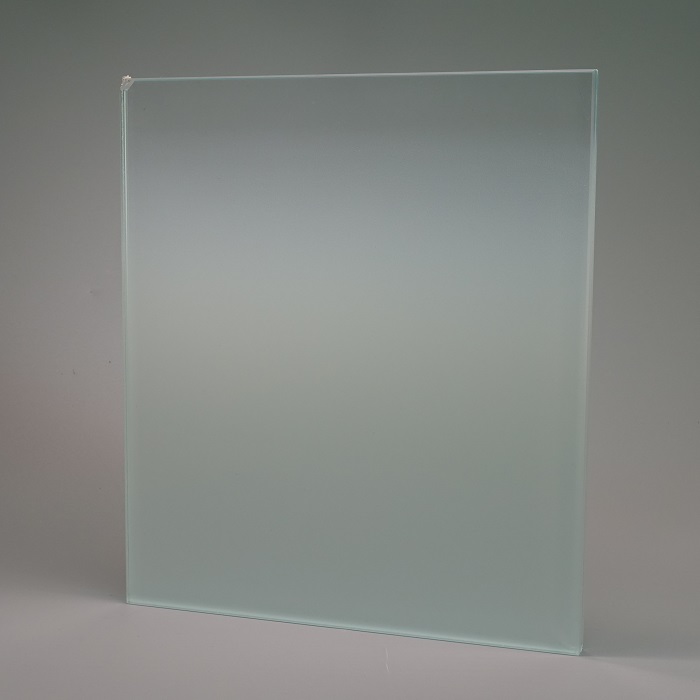
2024-12-27 10:58:05
Borosilicate Fireproof glass: Industry Development and Manufacturing Challenges
In modern industrial and construction fields, safety and efficiency are often the two key factors in design and material selection. Particularly in the fireproofing sector, Borosilicate Fireproof Glass has become an essential material due to its excellent high-temperature resistance, thermal shock stability, and long-term reliability. It is widely used across industries ranging from construction to home appliances and aerospace. However, despite the growing demand for this high-performance glass, manufacturers still face significant challenges in cost control, technological innovation, and environmental concerns during its production.

Unique Advantages of Fireproof Glass
One of the most notable characteristics of Borosilicate Glass is its exceptional thermal stability. Compared to ordinary glass, it can withstand higher temperature fluctuations without breaking due to sudden heat changes. This feature is attributed to its low thermal expansion coefficient, which helps maintain structural integrity when exposed to drastic temperature variations.
For instance, certain high-performance Borosilicate glasses can withstand temperature ranges up to 450°F (around 232°C). This makes Borosilicate glass a popular choice for kitchen and laboratory equipment, where it is exposed to high temperatures in ovens, microwaves, or heat sources without breaking. In the construction industry, this property is particularly crucial in fireproof glass applications, as the glass can delay the spread of fire and protect both the building and its occupants during a fire.
Expanding Market Demand Across Multiple Sectors
As the construction industry increasingly focuses on fire safety standards, the applications of Borosilicate Fireproof Glass have expanded significantly. In modern architecture, fireproof glass is not only used for windows but also in fire doors, partition walls, and other building elements. These glasses can maintain structural integrity at high temperatures, minimizing the risks posed by fires.
One study showed that fireproof Borosilicate glass produced by certain companies meets the European EN 1364-1 fire-resistance standard, capable of withstanding flames as high as 1000°C and maintaining structural integrity for up to two hours. This makes it an ideal material for high-specification construction projects. Additionally, the demand for this type of glass is also growing in the home appliance industry, particularly for use in ovens and stoves, where Borosilicate glass’s high transparency and thermal shock resistance are highly valued.
Globally, the market demand for Borosilicate glass is steadily increasing. According to a report, the global fire-resistant glass market is expected to reach $6.2 billion by 2026, growing at a compound annual growth rate (CAGR) of 5.6%. Among these, the construction sector is expected to see the most significant demand growth. With rising global building standards and increased focus on safety, fireproof glass is likely to play an increasingly important role in both construction and engineering projects.
Technological Challenges in Manufacturing
Despite the outstanding properties of Borosilicate Fireproof Glass, the manufacturing process remains highly challenging. First, the raw materials for Borosilicate glass, including boron oxide and silica, are relatively expensive, and their production requires advanced equipment and high-energy consumption. As a result, the cost of producing Borosilicate glass is typically 30%–40% higher than that of regular glass.
The process of melting and forming the glass requires extremely high temperatures, and the thermal expansion coefficient must be carefully controlled. To ensure high-quality products, manufacturers need to invest heavily in research and development, as well as in production facilities, to meet strict quality standards for every batch of glass.
For example, one factory improved its melting casting technology to precisely control the thermal expansion coefficient, keeping it at 3.3 × 10^-6/K, which enhances the thermal shock resistance of the glass. This technological advancement significantly improved production efficiency and helped reduce overall manufacturing costs.
Cost Control and Environmental Concerns
While technological advancements help enhance the performance of Borosilicate glass, controlling production costs remains a significant challenge. The high energy consumption during the manufacturing process is a key factor driving up costs. To address this, many manufacturers have adopted efficient energy management systems and waste heat recovery technologies to reduce energy consumption.
For instance, one company installed an advanced waste heat recovery system in its production facility, reducing energy consumption by about 15% and significantly lowering carbon emissions. Furthermore, many manufacturers are considering the use of renewable energy sources, such as solar and wind energy, to replace traditional power, further reducing the carbon footprint of the production process.
Environmental concerns extend beyond energy consumption. In terms of raw material usage and glass waste management, many manufacturers are now focused on minimizing resource waste and improving glass recycling to reduce their environmental impact.
Future Outlook: Green Production and Innovative Development
As global environmental standards continue to tighten, manufacturers of Borosilicate Fireproof Glass are increasingly focusing on developing greener production technologies. Some companies have already begun exploring more environmentally friendly raw materials and improving manufacturing processes to reduce carbon emissions and energy consumption. Additionally, many are investing in more efficient fireproof glass products to meet the increasingly stringent demands of the construction and safety industries.
Looking ahead, as technological innovations progress and market demand grows, Borosilicate Fireproof Glass is expected to see wider applications across various industries and sectors. From construction to home appliances, from high-end automobiles to aerospace technology, Borosilicate glass will undoubtedly continue to play an important role in enhancing product safety and durability.
In summary, Borosilicate Fireproof Glass, as a high-performance material, has already demonstrated great potential across multiple industries. With continued technological advancements and a focus on sustainability, the Borosilicate glass market is set to expand further. Manufacturers will need to keep innovating to meet the increasingly complex demands of the market.
Copyright © 2025 Dongguan Yinjian Glass Engineering Co., Ltd All Rights Reserved